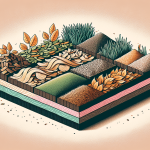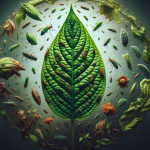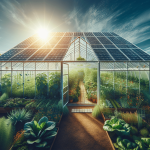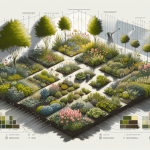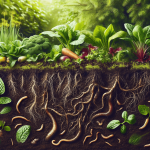This post may contain affiliate links. As an Amazon Associate, we may earn commissions from qualifying purchases.
In the article, “The Process Of Photoperiodism In Plants And How It Affects Flowering And Fruiting Cycles. How Can Gardeners Manipulate Light Exposure To Control These Cycles?”, you’ll dive into the fascinating world of photoperiodism and its crucial role in the life cycle of plants. You’ll learn how varying lengths of day and night impact when plants flower and bear fruit, vital knowledge for any gardening enthusiast. With a friendly and straightforward approach, the article also provides practical tips on how you, as a gardener, can manipulate light exposure to steer your plants’ growth precisely when you want them to. Have you ever wondered how plants know when to bloom or bear fruit? It almost seems like a magical process, but in reality, it all comes down to something called photoperiodism. This fascinating process is crucial for gardeners to understand if they want to master the art of cultivating plants. But don’t worry, we’ll break down everything you need to know, step by step. Let’s dive into the world of photoperiodism and discover how you can manipulate light exposure to control the flowering and fruiting cycles in your garden.

What is Photoperiodism?
Photoperiodism is essentially the physiological reaction of organisms to the length of day or night. When it comes to plants, this phenomenon is primarily about how the length of daylight impacts their development and behavior.
Why is Photoperiodism Important in Plants?
Photoperiodism plays a crucial role in the life cycle of many plants. It determines when they flower, set seed, and go into dormancy. By understanding photoperiodism, you can help your plants thrive, avoid mistakes, and even force them to flower or fruit when you want them to.
The Role of Light in Plant Growth
Light isn’t just for photosynthesis; it also acts as a signal for various growth stages in plants. By perceiving changes in the duration of light and dark periods, plants can gauge the time of year and adjust their growth accordingly.
Types of Photoperiodic Plants
Here’s a quick overview of the types of photoperiodic plants and their responses:
| Type of Plant | Response to Photoperiod |
|---|---|
| Short-day plants | Flower when daylight is less than a certain number of hours (usually 10-12 hours). For example, chrysanthemums and poinsettias. |
| Long-day plants | Flower when daylight exceeds a certain number of hours (usually 14-16 hours). Examples include spinach and lettuce. |
| Day-neutral plants | Flower regardless of daylight length. Examples are tomatoes and cucumbers. |
Understanding these categories can help you better manage your garden and meet your plants’ specific needs.
The Science Behind Photoperiodism
Phytochrome: The Light-Sensing Pigment
One of the main components involved in photoperiodism is a pigment called phytochrome. This pigment exists in two forms: Pr and Pfr.
- Pr: Absorbs red light (660 nm) and is converted into Pfr.
- Pfr: Absorbs far-red light (730 nm) and is converted back to Pr.
During the day, the sunlight converts Pr to Pfr, and at night, Pfr slowly changes back to Pr. The ratio of these two forms of phytochrome acts as a signal for various growth processes.
How Phytochrome Regulates Growth
Phytochrome helps regulate multiple growth stages, including seed germination, flowering, and even leaf expansion. For instance, in short-day plants, high levels of Pfr inhibit flowering, whereas in long-day plants, Pfr promotes flowering.
How Photoperiodism Affects Flowering and Fruiting Cycles
Short-Day Plants
Short-day plants flower when the night is long enough to convert enough Pfr back to Pr. If the nights are too short, these plants will not flower.
Long-Day Plants
On the other hand, long-day plants require shorter nights to maintain enough Pfr levels for flowering. If the nights are too long, they will not flower.
Day-Neutral Plants
Day-neutral plants don’t rely on the photoperiod for flowering. Instead, they may rely on other environmental cues such as temperature or internal biological clocks.

Gardeners: Here’s How You Can Manipulate Light Exposure
Now that you understand how photoperiodism affects plants, let’s get into how you, as a gardener, can manipulate light conditions to control flowering and fruiting cycles.
Light Control Techniques
- Use Artificial Lighting:
- By installing grow lights, you can extend the length of the day for long-day plants or shorten the length of the day for short-day plants.
- Implement Shading:
- Applying shade cloths can help you reduce the amount of light reaching your plants, mimicking shorter days for short-day plants.
- Control Light Cycles:
- You can use timers to regulate when the grow lights turn on and off, maintaining precise day/night cycles for your plants.
Example Scenarios
For Short-Day Plants (e.g., Chrysanthemums):
- Use opaque covers to extend the night period by covering the plants in the afternoon and uncovering them after the required long night.
For Long-Day Plants (e.g., Lettuce):
- Use supplemental grow lights in the evening to extend daylight hours.
By understanding your plants’ specific needs and carefully controlling light, you can encourage your plants to flower or bear fruit exactly when you want them to.
The Interplay Between Photoperiodism and Temperature
In addition to light, temperature works hand-in-hand with photoperiodism to affect a plant’s growth cycle.
Vernalization
Vernalization refers to the induction of a plant’s flowering process by exposure to a prolonged period of cold temperatures. Some plants require this cold period to be followed immediately by certain light conditions for flowering to occur.
Experiment with Light and Temperature
Engage in a bit of experimentation. By tweaking both light exposure and temperature conditions, you can discover the optimal conditions for your plants, ensuring they flourish and produce as expected.
Practical Tips and Tricks for Home Gardeners
Seasonal Adjustments
Remember to adjust your light setup according to the seasons. As days get shorter or longer naturally, your gardens may need manual intervention to stay on schedule.
Monitor Your Plants
Keep a close eye on your plants. By paying attention to their growth patterns, you’ll gain insights into how well your photoperiod manipulation is working and can make necessary adjustments.
Use Technology to Your Advantage
Many smart garden systems now offer features that allow you to control light and temperature from your smartphone. This can make it much easier to maintain the perfect conditions for your plants.
Challenges and Considerations
Energy Costs
Using artificial lighting can increase your energy bills. Consider using energy-efficient LED grow lights to mitigate this issue.
Space Constraints
If you have a small garden, adding artificial lighting and shading systems may consume valuable space. Plan accordingly to make the best use of your available area.
Finding the Balance
It may take some time to find the perfect balance of light and darkness that works best for your specific plants. Don’t be discouraged by initial failures; use them as learning experiences.
Conclusion
Understanding photoperiodism can significantly enhance your gardening skills, allowing you to manipulate your plants’ flowering and fruiting cycles to meet your needs. With the tools and techniques discussed, you can create the perfect environment for any plant, ensuring your garden thrives year-round. So, why not give it a shot? By playing around with light exposure, you can bring a touch of magic to your gardening experience. Happy gardening!

